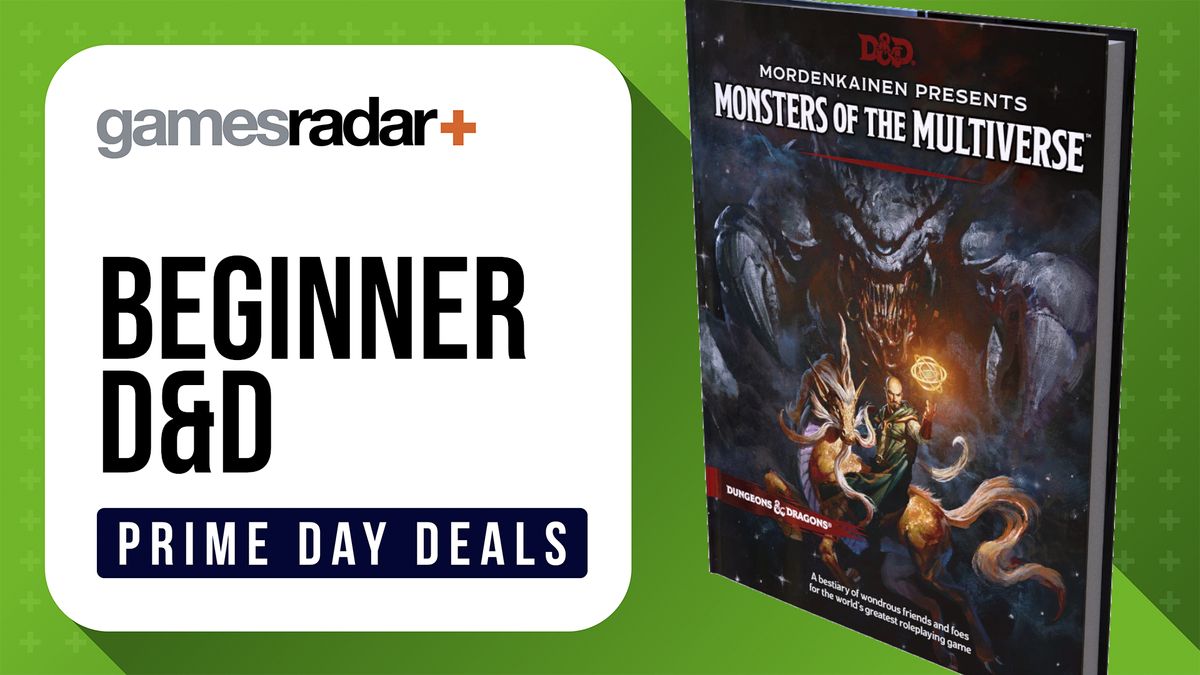Horror isn’t necessarily the first thing you think of when it comes to D&D, but Icewind Dale: Rime of the Frostmaiden is an exception to that rule. Set in the far north of the Forgotten Realms (the same world as Baldur’s Gate 3), this campaign is the story of awful things that lurk beneath the ice – and trying not to be disemboweled by them.
But how do you make one of the best tabletop RPGs scary? We had a chance to chat with D&D senior story designer Chris Perkins (opens in new tab) about Icewind Dale: Rime of the Frostmaiden, and he’s got a few tips that he and the team used to inject maximum creepiness into the campaign.
Fear of the unknown

“First, you need the characters to care about something. Ten-Towns [a collection of villages in Icewind Dale], for example. These settlements aren’t perfect, but there are lots of decent, hard-working folk living there,” Perkins explains. “Next, the horror needs to sneak up on you. It can’t be standing in the plain light of day, holding a sign that reads, ‘Kill me, I’m the bad guy.’ That’s why we shrouded Icewind Dale in wintry darkness and featured monsters that could hide their presence.”
According to Perkins, this sense of uncertainty is crucial. Isolation and paranoia are sure-fire ways of making our skin crawl, and he cites John Carpenter’s The Thing, Ridley Scott’s Alien, and Stanley Kubrick’s The Shining as influences on Rime of the Frostmaiden. This is why the campaign leans on psychological scares from contemporary horror as opposed to the Gothic influences in Curse of Strahd Revamped. Indeed, “when you see a creature coming toward you in the blowing snow, you’re not always sure who or what it is. The loss of identity plays on fears of the unknown. By giving characters their own secrets, we can also sow mistrust, creating a party dynamic that adds a bit of tension to the story.”
However, this introduces difficulties of its own. Namely, the likes of Alien feature a singular monster that’s nearly unstoppable. It demonstrates that power by wiping out most of the cast, usually in colorful ways. But D&D is different. Unlike movies, you can’t get away with murdering most of your players to hammer home that sense of threat.
Get started in D&D

New to the hobby? You can find out how to start playing D&D here, or learn how to play D&D online if you can’t meet up with your group in person. That includes everything you’ll need to get started, tips on how to find a party, and more.
In this case, the team’s solution was to emphasize the peril early on in the adventure. This would help players realize that they should approach this campaign differently – and to fear what’s around the next corner.
“The characters learn quickly that Icewind Dale is an unforgiving place,” reveals Perkins. “It is, in fact, out to get them. Even the starting quests in the first chapter try to drive home the point that the characters are as likely to be prey as predators.”
That doesn’t mean it won’t be any fun, though. As Perkins notes, “since every quest in the adventure is optional, the characters always have the power to decide, ‘nope, we’re not going there’ or ‘We need to run away now’… Sometimes the smartest thing to do is flee in terror.”
Taking a break

It’s a very different approach to Icewind Dale that we haven’t seen before in its long history. Although an Infinity Engine-based video game from the 2000s and popular novels have been mining its lore for decades, Rime of the Frostmaiden offers a unique spin on familiar territory. This is partially because of the upcoming Dark Alliance video game, an action RPG set in the same region. Perkins states that it has an “edge”, so the team wanted to make sure their adventure did as well.
Not that it’s all doom and gloom. According to Perkins, another vital building block for horror in D&D is humour. Tension will only get you so far, and players will become exhausted if the scares don’t let up.
“Some DMs might be surprised to find bits of humour scattered throughout the adventure,” he says. “Humour and horror go together like chocolate and peanut butter. You can’t keep the players on the edges of the seats forever; they need a good laugh now and then to relax, so that the horror can build up again naturally.”
It’s a similar story with the campaign’s quest structure. It offers multiple quests players can choose between – or ignore – at their leisure, a feature from the D&D Essentials Kit that offered a narrative through-line to hold these otherwise-disparate missions together. In contrast to older products like the Dungeons and Dragons Starter Set, this means you can play Icewind Dale: Rime of the Frostmaiden multiple times and still have a very different experience.
In a meta sense, making this campaign book was an equally refreshing experience. A lot of new talent was brought on behind the scenes, resulting in something that really stands out thanks to this fresh perspective. As Perkins observs, “Rime also gave me the opportunity to work with a bunch of new writers. I love bringing fresh voices and ideas into an official D&D product. My next project does the same.”
There’s no word on what that project is just yet, but if Icewind Dale: Rime of the Frostmaiden is anything to go by, it’ll certainly keep us on our toes.
How do you write a Dungeons and Dragons campaign? We’ve got the answer in our exclusive interview with one of the Candlekeep Mysteries writers.
 Game News Video Games Reviews & News
Game News Video Games Reviews & News



